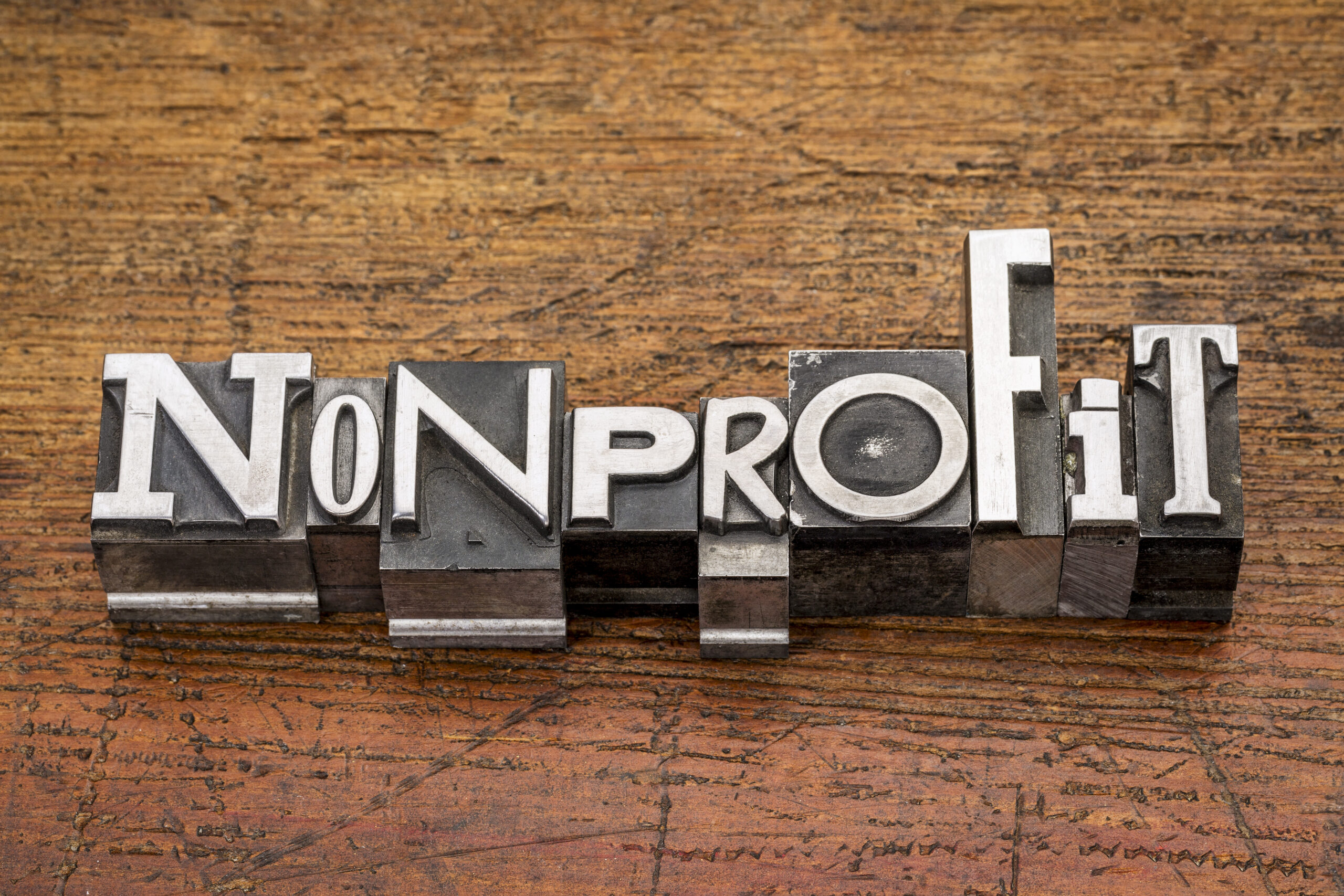
You started your nonprofit because you saw a need in your community and felt inspired to meet that need. But doing good doesn’t pay the nonprofit’s bills, unfortunately. To make this happen, you MUST think of your nonprofit like a business — and run it that way.
This means, you have to be clear about your audiences the way a business is clear about its customers. You have to establish your brand. You need a marketing plan. You need a budget. And you need policies, procedures, and processes.
If you’re a business, and you don’t have an audience, a brand, a budget, and a marketing plan, you can’t sell your products or services. This also means you can’t make money or turn a profit. Doesn’t that kind of defeat the purpose of starting a business in the first place?
Similarly, if you’re a nonprofit and you don’t have these business essentials in place, you can’t raise the money you need to fund your programs. And that’s not helping anyone.
So you might be asking yourself, “How do I run my nonprofit like a business exactly?”
And here’s the answer — which might be THE most important answer: You must make decisions based on data and reality, not feelings and emotion.
Obviously, this is easier to do if you’re selling, say, donuts. But when you work with people or animals who are in distress, it can be very hard to make decisions based on numbers instead of the love you have for the people or animals you serve.
I get it.
But you still need to put your business owner hat on and understand how best to run your nonprofit like you own it so that you have the resources you need to help those people or animals.
Here are 8 questions to ask yourself and consider if you want to run your nonprofit like a business:
1. Who are your audiences?
You might want to open up that donut shop because you LOVE donuts. But a donut shop wouldn’t succeed unless there were people (i.e. customers) who wanted to buy donuts! Right? So to figure that out, you’d start with a market study proving there are people living around and driving by the proposed donut shop who would want to buy donuts.
In your business plan, you’d spell out who your customers would be — commuters on their way into work at the university and hospital right down the street, students living in the many apartments within walking distance, people shopping at other stores in the shopping center, and people living in the residential neighborhoods near the shop meeting for mid-morning or afternoon coffee.
See how that works?
As a nonprofit, you must know who YOUR “customers” are, in other words, your audiences. A nonprofit typically has two distinct audiences: those your organization will provide services to and those who will support your organization’s work financially and through volunteer service.
In your nonprofit’s business plan, use things like community needs assessments and census data to back up your perceptions of who your audiences will be. A business owner wouldn’t dream of skipping this step. You shouldn’t either.
2. Does your brand speak to your audiences?
Before opening that donut shop, you’d want to hire a branding firm to design a logo, a tagline, and brand standards to give your shop a consistent look, feel, and message. Business owners often tackle this task first because it helps them think through their brand identity. Who are they trying to be? Who are they trying to sell to?
Plus, it’s fun!
Do you want your donuts to invoke nostalgia? Or whimsy? Are you a high-end shop? Or a good value? Are your donuts over-the-top indulgent? Or are they the familiar donuts from childhood?
Your nonprofit also needs a consistent brand and messaging that invokes the right feelings among your audiences. As a new nonprofit, your branding establishes trust that your organization really exists and does what you say it does.
Build your brand on purpose so people understand who you are from the get-go. To accomplish this, seriously consider investing in an experienced brand specialist. Many graphic designers will work at a discount for a nonprofit whose mission they believe in.
3. Does your marketing plan push your brand out to your audience?
 It doesn’t help to have a logo and brand standards if you don’t have a plan to share your brand (and the services and programs you provide) with the community. In the donut shop world, every day you aren’t marketing your brand is a day you’re not selling as many donuts as you could. That’s not good!
It doesn’t help to have a logo and brand standards if you don’t have a plan to share your brand (and the services and programs you provide) with the community. In the donut shop world, every day you aren’t marketing your brand is a day you’re not selling as many donuts as you could. That’s not good!
You’ll want to market your nonprofit in a strategic way so you can make sure the people who could benefit from your services and programs know you exist. At the same time, bring in as many supporters as you can, including people who will give generously to support your organization’s work. It’s challenging to market to your two different audiences. But that’s all the more reason to have a written marketing plan. Isn’t it?
Use all the tools that make sense to market your organization, including your website, social media, email, and direct mail. If you’re not marketing your nonprofit every day, you’re missing out on donations that could be helping you meet needs in your community. And you need those to survive!
4. Does your budget reflect reality?
A business cannot operate without a budget. Period. A donut shop owner has to consider everything that goes into making donuts and running the store…and how much that’ll cost…so they know how much money they’ll need to pay for everything.
This drives the price of the donut, though the donut shop owner must also consider what the market will bear when setting the price. If the cost of making the donut is more than a customer will pay for the donut, it’s game over.
Drafting an organizational budget based on fundraising is challenging for sure. There’s certainly a lot you can’t predict, especially when you don’t have two or three years of data to draw from. But you STILL need to make a budget and stick to it. (When you need to deviate from the budget, you capture that with a mid-year adjustment.)
As a nonprofit, start with every single cost associated with running your nonprofit, from postage and office supplies to payroll and rent. How much does it cost to run your programs? How much does it cost to operate the nonprofit? How much does it cost to market your services? If you don’t know this information, you don’t know how much money you need to raise.
Once you figure out the costs, estimate how much money you can realistically raise. Is there a gap — meaning, too many expenses and not enough income? If so, you’ll have to serve fewer people or animals and scale back programming. It stinks, I know. But the good news is you can always ramp up as your donor base grows and you bring in more donations.
The point is, you cannot run your nonprofit like a business if you don’t have a budget and a commitment to sticking to it.
5. Are you using data to make projections?
 As you raise money and run your programs, you’ll learn, grow, and gather data. With this data and experience, you’ll be able to make better projections and create more accurate budgets and fundraising plans. Sounds good, doesn’t it?
As you raise money and run your programs, you’ll learn, grow, and gather data. With this data and experience, you’ll be able to make better projections and create more accurate budgets and fundraising plans. Sounds good, doesn’t it?
Let’s say our donut shop owner wants to increase sales by expanding outdoor seating to accommodate more people and increasing hours of operation. Their original business plan called for them to be closed on Sunday, but the owner begins to realize this is a missed opportunity given the many social media comments from potential customers lamenting that the shop is closed on Sunday.
To plan for expanded seating, increased hours, and an additional day of operation, the owner will use existing data to predict how many more donuts they will sell, how much it’ll cost to cover this expansion and, finally, how much of a profit is likely as a result.
The donut shop owner can then ask themselves, is it worth it? Expanding will take a lot of work, so will there be enough profit to make it worthwhile?
Hopefully, considering this example of the donut shop helps you understand how running your nonprofit like a business enables you to use data to determine when the time is right to expand programs, add a new program, hire an additional staff member, and lease a building.
Your data will tell you how much it really costs to run your programs. Your data will also tell you how much it costs to raise money. You could ramp up fundraising to bring in an additional $50,000 a year, but how much would you need to spend to do that?
Let your data, not your feelings, guide you in decisions — both large and small….no matter how good your intentions are.
6. Are you managing risk? Are you even thinking about risk?
When you open a donut shop, you have to think about everything that could go wrong and take steps to prevent bad things from happening. What if an employee gets a severe burn while making donuts? What if a customer slips on a freshly mopped floor?
Even in the early days when the donut shop is struggling financially, appropriate insurance is required.
When you run your nonprofit like a business, you can’t assume a person who gets injured while volunteering for your organization won’t sue you because you’re a nonprofit. There’s always that possibility. So work with an insurer or an insurance broker to understand the coverage you need to best protect your organization and its liability.
And please don’t think bad things won’t happen because you’re doing good work. Unfortunate things can happen sometimes, regardless of the good work you’re doing. We’ve seen it time and time again.
Whatever you do, don’t run your nonprofit on a wing and a prayer.
7. Do you have the policies, procedures, and processes in place to run your nonprofit smoothly and efficiently?
 Too often, nonprofits come running out of the gate as fast as they can, intent on helping as many people or animals as possible — yet failing to stop long enough to get the proper infrastructure in place.
Too often, nonprofits come running out of the gate as fast as they can, intent on helping as many people or animals as possible — yet failing to stop long enough to get the proper infrastructure in place.
Don’t get me wrong. We ALL love the helping part. It’s why we got into nonprofit work in the first place! But the business side of a nonprofit requires a solid foundation of written policies, procedures, and processes.
Now, I know. The least fun aspect of running a nonprofit may be setting up those 3 P’s to ensure everything runs smoothly. I get it.
Remember, though, when you run your nonprofit like a business, you’re setting yourself up for success. This means absolutely needing to have those 3 P’s in place.
A donut shop needs a hiring process, policies their employees need to follow, and kitchen procedures to make sure all food safety guidelines are followed. Who is going to check the restroom for toilet paper? Who orders boxes when you’re running low (and how does someone do that anyway)? How exactly are the donuts made?
These are all things that can be addressed with the 3 P’s.
So thinking about your nonprofit as it was a business, what policies, procedures, and processes should be in place? Just some food for thought…
8. Do you pay for help when you need it?
There is a tendency in the nonprofit world to try to access everything possible for free so more money can go to programs and to helping more people or animals. But when you run your nonprofit like a business, you recognize that sometimes it’s best to pay a professional.
When dealing with policies, procedures, and processes (for example), consult an accountant, attorney, HR professional, and anyone else you need to ensure you get everything set up properly. Start with your Board, and see if you have supporters with the right skills and availability to help. But if you aren’t fortunate enough to have an insurance specialist on your Board, hire one!
When you run your nonprofit like a business, you recognize your strengths and weaknesses and know when to pay for expertise — because doing so is an investment in doing things RIGHT.
The owner of the donut shop probably knows a lot about donuts. But do they know about workers’ compensation? Probably not. And that’s something you don’t want to mess with if you have employees.
When to run your nonprofit like a nonprofit

We’ve spent some time looking at the ways you should run your nonprofit like a business. But aren’t there things that are unique to running a nonprofit that companies, like a donut shop, don’t have to deal with? Absolutely.
Here are 3 ways you need to run your nonprofit, well, like a nonprofit.
1. You don’t pay taxes, but you are accountable to the IRS and your funders. [U.S. only]
Even though nonprofits are tax-exempt, they must still file with the IRS each year and maintain true and accurate records.
Because nonprofit organizations are tax-exempt, they’re required to operate with transparency. In fact, your nonprofit’s Form 990 is published online for anyone who wants to review it. Many funders use these Form 990s to research organizations that are requesting support. Some people in the nonprofit sector even think of the Form 990 as a marketing document, another way to share your organization’s good work.
If you’re not familiar with Form 990 or want to make sure they’re dealt with appropriately, consult an accountant who specializes in nonprofits to make sure you’re properly reporting revenue and expenses.
2. You’re the Executive Director, but you’re not the boss.
If you were a donut shop owner, you’d be the boss. You’d probably also be, in the early days, the manager, the lead cashier, and the head donut maker.
When you start a nonprofit, you’re required to have a Board right from the get-go. And one of the Board’s primary roles is to hire and supervise the Executive Director.
In the early days, you, as the founder, will likely be seen as the boss by everyone, even Board members. But it’s important to keep in mind that the Board’s role is not symbolic. Take time to build a Board that can take on the responsibility of supervising you, the Executive Director, and adopting policies — amongst many of the Board’s other primary functions.
3. Your end game is your mission, not money.

The most important distinction between a business, like a donut shop, and a nonprofit is the purpose. The donut shop exists to make money, though it may have other roles in the community such as attracting people to live, work, and shop there. But ultimately, the donut shop exists to turn a profit.
For a nonprofit organization, the revenue you bring in through fundraising and services makes it possible to fund your programs and fulfill your mission. So that’s two functions to manage: bringing the money in through fundraising and then executing programs so you can do the good work your organization was founded to do.
It’s up to you to keep your eye on both functions: the money coming in and the services being delivered.
The Bottom Line
When you run your nonprofit like a business, you will feel confident as you deepen your presence in the community. You’ll know you’re managing the business aspects of the organization properly, and you’ll be comfortable opening your books to anyone who asks.
And by running your nonprofit like a nonprofit, you’ll fulfill your mission and change more lives. And that’s what you’re here for!






Leave A Comment